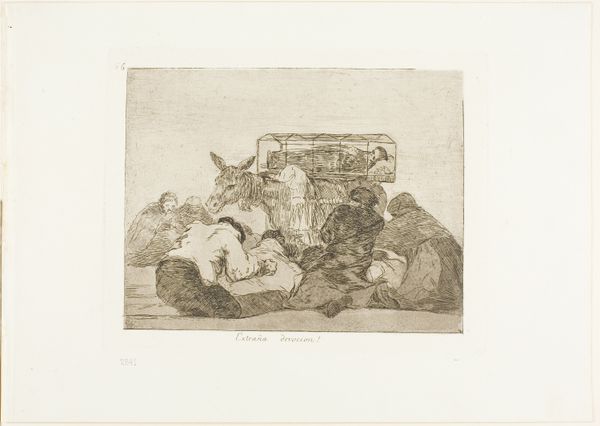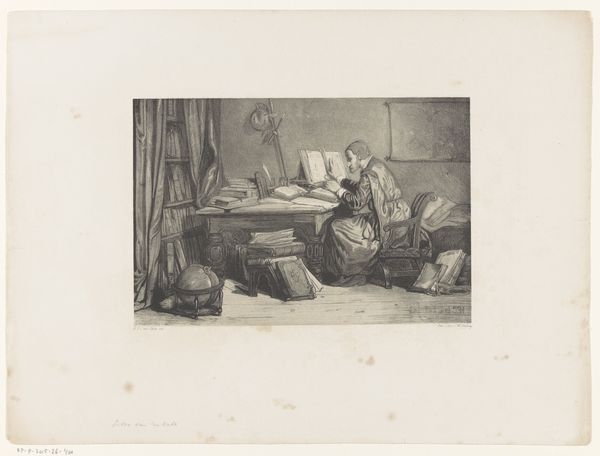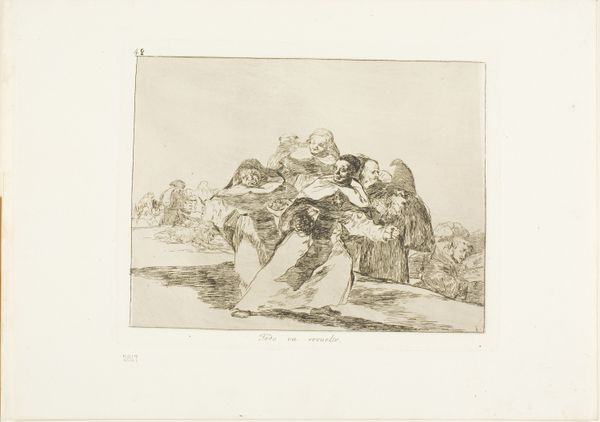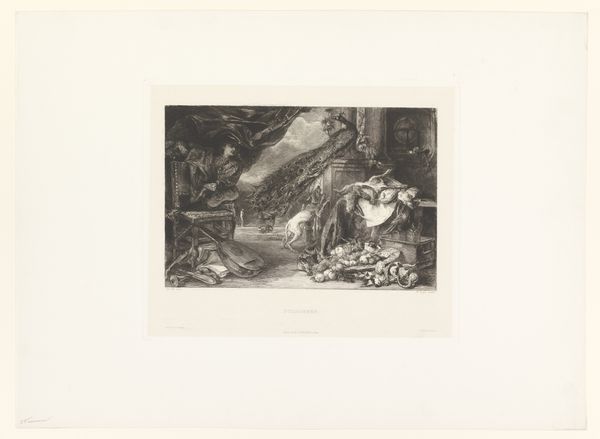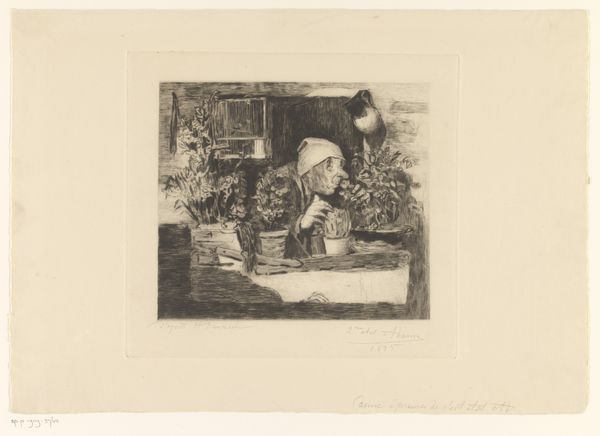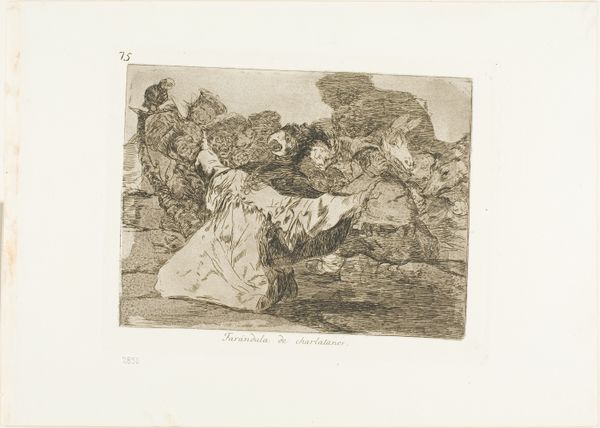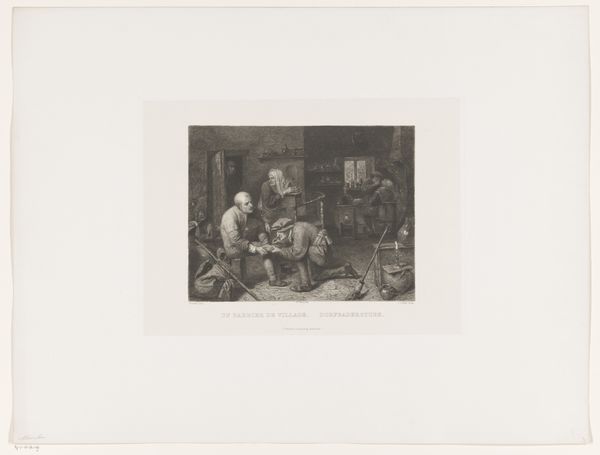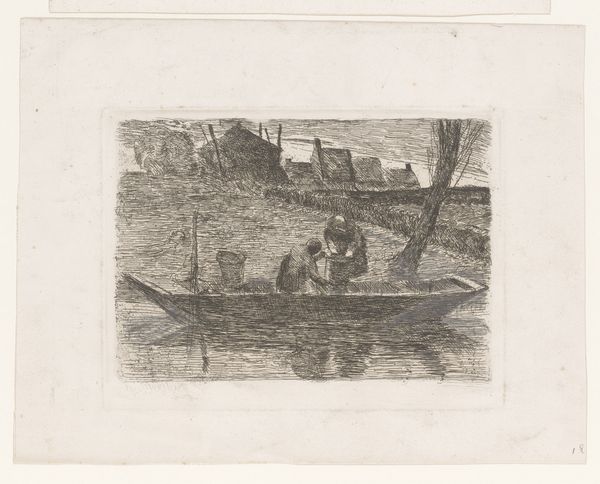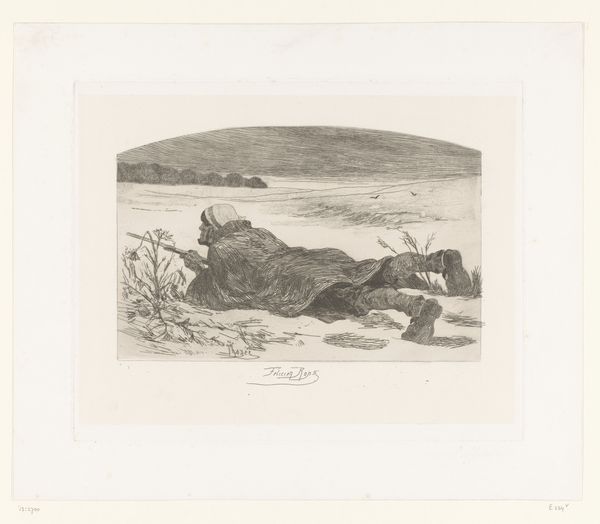
print, etching
#
animal
# print
#
etching
#
dog
#
genre-painting
Dimensions: height 236 mm, width 317 mm
Copyright: Rijks Museum: Open Domain
Curator: Let's take a look at "Hond in een afwasteil aan de rand van het water," or "Dog in a Tub at the Water's Edge," an etching by Auguste Danse, created in 1889 and residing here at the Rijksmuseum. What are your first thoughts? Editor: Immediately, I’m struck by its somber, almost melancholy air. The muted tones and the seemingly weary pose of the dog... It evokes a sense of the everyday burdens that touch both humans and animals alike. Curator: That's an interesting read. Genre paintings such as this were immensely popular during this period, weren’t they? Serving as intimate observations on daily life that resonated with a wide audience. Danse often depicted animals, particularly dogs. We can speculate about his choices in this print—why a dog in a tub, next to all the other buckets and bins? What did these genre paintings represent to the rising middle class? Editor: Well, beyond its documentary aspect, I can’t help but consider the symbolic implications. Water often represents cleansing or purification. The dog, hunched in the tub, seems burdened—as though the artist wants to convey that something more is taking place than an everyday cleansing. Is the dog perhaps being punished, banished from a shared communal domestic life represented by the scattered objects on the side? Curator: That interpretation has potential. During this era, art shifted from allegorical figures towards mundane activities and familiar landscapes, often highlighting the virtues and struggles of ordinary individuals. Was Danse suggesting a critique on social status or wealth by portraying this scene? The dog, here, almost takes the position of someone from a low socio-economic class. Editor: Precisely, the symbolism of domestic animals goes back centuries. In numerous traditions, the dog represents loyalty and guardianship, so its dejected stance might symbolize a wider betrayal of values during a period of rapid industrial change. Think of the ways dogs have been presented as psychopomps, acting as a bridge between worlds… Curator: I like the parallel to industrial change. If the home wasn’t as secure during the end of the nineteenth century as its occupants had imagined, showing the distress or unhappiness of the house pet serves as a way to subtly show the real state of mind for the residents as well. Thank you for making me rethink the domestic space for the end of the 19th century. Editor: My pleasure. The language of visual symbols invites us to explore beneath the surface of everyday existence, even in a seemingly simple print.
Comments
No comments
Be the first to comment and join the conversation on the ultimate creative platform.
